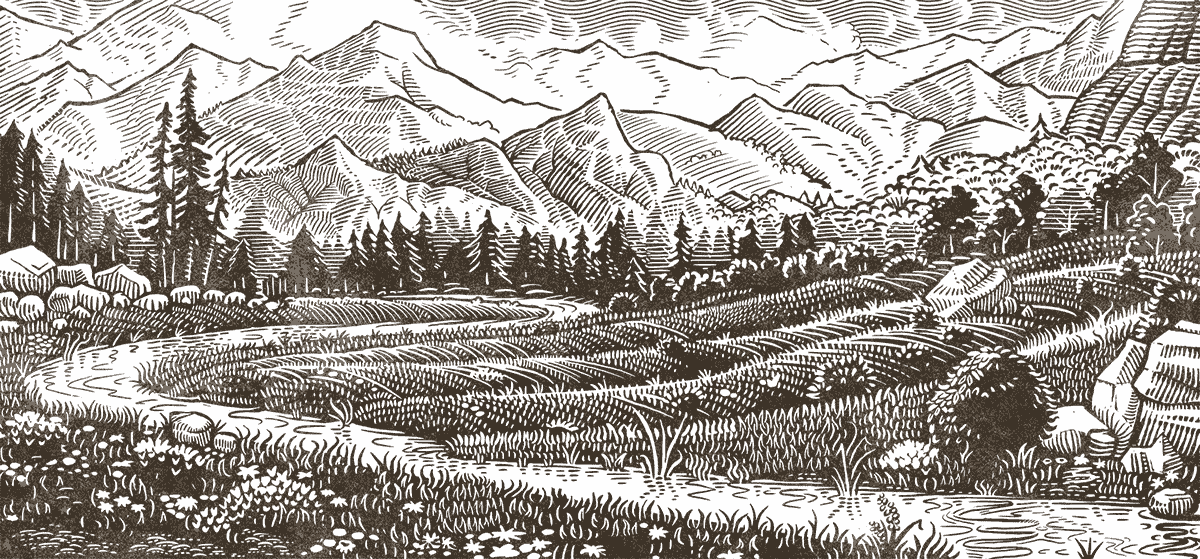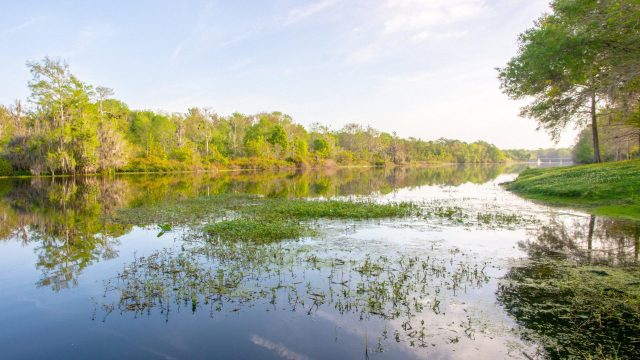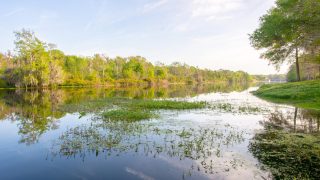
Legal Rights Recognized for Rivers in Florida and Quebec
By Nicole Pallotta, PhD, Senior Policy Program Manager
July 2022 UPDATE: Dismissing a lawsuit designed to block development of wetlands, a judge ruled Orange County’s “rights of nature” charter amendment was preempted by Florida’s 2020 Clean Waters Act, which banned local governments from granting legal rights to the environment.
Summary/intro
Summary: The global “rights of nature” movement — which seeks to secure legal rights, including standing, for features of the environment like rivers, forests, and ecosystems — continues to advance with two significant developments in North America.
In February 2021 — in a first for Canada — the Magpie River in Quebec was granted legal personhood via parallel resolutions adopted by a local municipality and a First Nation band.
And in November 2020, voters in Orange County, Florida, approved a charter amendment granting legal rights to all waterways, including two rivers, in the county. With Florida’s ordinance, which passed with 89% of the vote, Orange County became the most populous jurisdiction in the U.S. to adopt legislation recognizing rights of nature. 1
The Whanganui River in New Zealand was the first river in the world to be granted legal personhood in 2017. Since then, similar efforts have been increasing around the world. 2
The Rights of Nature Movement
Besides New Zealand, efforts to formally recognize rights of nature have been successful in countries like Bolivia, India, Ecuador, and increasingly, the U.S. In 2019, the Klamath River in northern California was granted legal personhood by a Native American tribe, making it the first U.S. river to receive this status. Though it was overturned by a federal judge in 2020, the Lake Erie Bill of Rights — approved by voters in Toledo, Ohio in 2019 — was the first law in the U.S. to give rights to a specific ecosystem.

The movement to recognize rights or legal personhood for features of the natural world has roots in both philosophy and practical concerns about environmental degradation. In light of the failure of governments and existing environmental laws and regulations to provide adequate safeguards against pollution and other harms, formal recognition of rights of nature is a relatively new pathway to ensure protection for the environment — and the humans and nonhumans who live there.
The philosophical underpinnings of rights of nature can be traced to indigenous worldviews that view humans in relationship with, rather than separate from, the natural world. This focus on interconnectedness and interdependence stands in contrast to the anthropocentric worldview that conceives of humanity apart from, and in dominion over, nature and animals. A column in the National Review criticizing Orange County, Florida’s ordinance (discussed below) derisively but correctly notes that it — and similar legislation — “dilutes human exceptionalism.”
Rights of nature laws are also grounded in an emerging paradigm shift away from viewing the environment and the animals who live there as economic resources to be exploited by private interests and toward one of stewardship and respect.
A WUFT special report notes the indigenous roots of the movement:
While it’s new to see these ideas debated in local-government chambers and at the state capitol, concepts of rights or personhood for nature are not new. Rights of Nature have been adopted into Native American tribal treaties since at least the mid-19th century. The philosophical foundations stretch much farther back to native traditions that understand nature not as property or a resource but as an entity imbued with an innate right to exist and flourish. This ancient understanding has taken on a new urgency in recent decades amid the ruin of major rivers and unprecedented rates of deforestation, glacial melt and species extinctions.
While there has been a movement to protect the environment for decades — with the origin of the legal arm often traced to Christopher Stone’s influential 1972 law review article, “Should Tress Have Standing?” 3 — the rights of nature approach has gained momentum in recent years as a new tool to stave off environmental degradation where other approaches have failed.
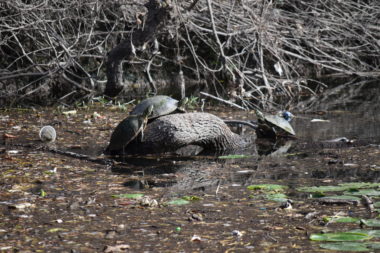
Specific rights accorded to features of the environment typically center on freedom from pollution and other ecological harms, as well as basic rights to exist, flourish, and, in the case of rivers, flow.
Just as the ideas underpinning the rights of nature movement are not new, neither is the concept that entities other than humans can have legal personhood. Our legal system currently recognizes corporations, ships, and municipalities as persons under the law.
Quebec’s Magpie River
In February 2021, the 120-mile Magpie River (or Muteshekau-shipu in Innu) — renowned for whitewater rafting and site of a hydroelectric plant — became the first natural feature to be granted legal rights in Canada. These rights came via twin resolutions by the local municipality of Minganie and the Innu Council of Ekuanitshit, which granted the river legal personhood and nine distinct rights.
As reported in Canadian Lawyer:
The alliance to protect the Magpie river, in accordance with Innu customs and practices, granted the river the following rights: 1) the right to flow; 2) the right to respect for its cycles; 3) the right for its natural evolution to be protected and preserved; 4) the right to maintain its natural biodiversity; 5) the right to fulfil its essential functions within its ecosystem; 6) the right to maintain its integrity; 7) the right to be safe from pollution; 8) the right to regenerate and be restored; and finally, 9) the right to sue.
The last right is an important one. Without a specific provision authorizing the river itself or citizens to sue to enforce these rights, standing requirements can render both environmental and animal protection laws relatively toothless. 4
Legal standing, which requires that a party bringing a lawsuit show they have been personally harmed, can be a difficult and convoluted procedural hurdle in the context of animal and environmental protection laws, leaving many underenforced. Granting entities of nature and animals — or their advocates — legal standing is important to achieving just outcomes, as laws are only effective if they are enforced.
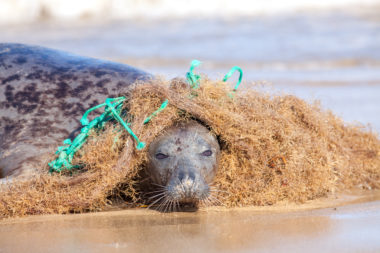
Therefore, most rights of nature laws include a provision granting legal standing to the natural feature itself, which can sue through a guardian or other steward, or to citizens to enforce their own nature-related rights (for example, the right to clean drinking water, as in the Orange County charter discussed below).
As mentioned above, indigenous communities have been leaders in the movement for legal recognition of rights of nature. Indeed a similar success spearheaded by the Maori in New Zealand — the first of its kind in the world — was a source of inspiration for the Magpie River resolutions. As reported by Canada’s National Observer:
Jean-Charles Piétacho, chief of the Innu Council of Ekuanitshit, said he was partially inspired after visiting the Whanganui River, which is sacred to New Zealand’s Indigenous Maori. Hearing of their decades-long fight to have the river legally recognized by the New Zealand government gave him hope that Canadians might do the same.
“We are not the owners of the river,” Piétacho said. “The Innu of Ekuanitshit have always been the protectors of the Nitassinan (ancestral territory) and will continue to be so through the recognition of the rights of the Muteshekau-shipu River.”
The elevation of protection over ownership is key to both nature rights and animal rights legislation. A major concern driving the resolutions recognizing the Magpie River as a legal person was the possibility of hydroelectric dams being built on the river in the future. Although public utility Hydro-Quebec — which constructed a power plant on the Magpie River in 2007 — abandoned its initial plans to build six hydroelectric dams on the river, advocates for the river are understandably wary of promises not codified into law. Development plans may change and again threaten the river. The hope is that formal recognition of the river’s legal rights will ensure its protection into the future. 5
Florida’s Wekiva River and Econlockhatchee River
In November 2020, voters in Orange County, Florida, overwhelmingly approved a charter amendment recognizing natural rights for the Wekiva River, Econlockhatchee River, and all waterways in the county. Spurred by concerns about deteriorating water quality, the charter grants all county waterways the right to exist, to flow, to be protected against pollution, and to maintain a healthy ecosystem. 6
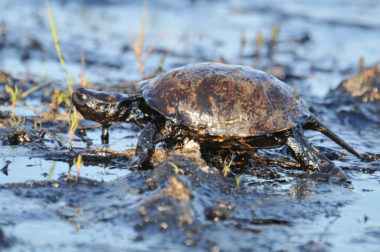
In addition to rights for the waters themselves, the Right to Clean Water Charter Amendment — also known as the Wekiva River and Econlockhatchee River Bill of Rights (or WEBOR) — grants all citizens in the county a right to clean water. Importantly, it also empowers them to ensure the law is upheld, by creating a “private right of action and standing for citizens of Orange County to enforce these rights and injunctive remedies.” As discussed above, standing provisions like this are a crucial component of rights of nature legislation.
The Animal Legal Defense Fund formally endorsed the WEBOR, worked directly with Speak Up Wekiva, the Florida-based environmental organization that ran the campaign, and sent out action alerts to Orange County voters. 7
Potential Challenges
It is uncertain how each of these developments will play out. But what is clear is that they are part of a larger — and growing — movement. Writing about Quebec’s Magpie River, Canada’s National Observer notes:
It is unclear how this will affect attempts to build developments on the river, including dams, moving forward, as legal personhood for nature doesn’t exist in Canadian law and could be challenged in court. Minganie, Innu council and several environmental groups — collectively called the Alliance — hope international precedents set in New Zealand, Ecuador and several other countries will help pressure the Quebec government to formally protect the river.
Florida’s ordinance may face a more direct challenge. Despite it being approved by nearly 90% of voters across the political spectrum, the WEBOR faces potential preemption by the Clean Waterways Act, a state law passed in July 2020 — during the campaign to get the WEBOR on the ballot — that contains a provision “prohibiting local governments from recognizing or granting certain legal rights to the natural environment.”
Speak Up Wekiva, which spearheaded the ballot initiative, filed a federal lawsuit challenging the state law on constitutional grounds. 8 The group withdrew its lawsuit after the initiative passed, as director Chuck O’Neal explained to WMFE:
We filed this lawsuit during the summer to prevent anyone stepping forward and challenging, to throw the charter amendment off the ballot. Now that it’s passed, we dismissed that lawsuit and are pursuing having other communities around the state pass similar ordinances that do not violate the preemption clause. Our hope is that there is a groundswell of communities passing these right-to-clean-water ordinances and finally will culminate in a statewide amendment that allows unequivocally communities to protect their waters, to establish rights-of-nature ordinances and charter amendments.

It is unclear whether the state will challenge the WEBOR, but for now it is on the books and will remain so unless it is overturned in court. Meanwhile, the Animal Legal Defense Fund is supporting a state-level bill that would remove the provision in the Clean Waterways Act that prohibits local governments from enacting rights of nature ordinances.
According to the Tampa Bay Times, Speak Up Wekiva’s O’Neal said, “either way it will serve as a test case — of what could be or what could have been. ‘The other 66 counties in the state can watch and see what happens here.’”
Conclusion
The movement to recognize rights of nature parallels efforts to elevate animals’ legal status beyond mere property. Both are responses to the substantive and procedural inadequacies in existing environmental and animal protection laws, and to the flawed conception of nature and animals as property or resources, whose value is determined only by their worth to humans. A more just legal and social construction perceives nature and animals as entities with inherent value and their own rights to exist and flourish.
Rights of nature laws also help animals on a practical level. Securing legal protections via tangible and enforceable rights for features of the environment, such as rivers and forests, protects the animals who depend on these complex ecosystems to survive as well as thrive.
In addition to supporting rights of nature efforts, the Animal Legal Defense Fund uses a wide variety of legislation and litigation to protect the environment and the animals who live there. As one example, in 2018, we filed a groundbreaking lawsuit targeting government inaction on climate change, employing the novel legal argument that as U.S. society becomes increasingly urbanized, the only place where the constitutionally protected right to liberty truly exists is in our public lands. This legal theory highlights the interconnectedness of certain human rights and animal rights. If the federal government is compelled to preserve natural spaces via a human right to solitude, the habitats of wild animals will also be safeguarded.
UPDATE: In July 2020, a judge ruled the Orange County charter amendment was preempted by state law, effectively overturning it.
Further Reading
- Renner, Rebecca. “In Florida, a River Gets Rights.” February 9, 2021.
- Lowrie, Morgan. “Quebec river granted legal rights as part of global ‘personhood’ movement.” CBC. February 28, 2021.
- Stilt, Kristen. “Rights of Nature, Rights of Animals.” Harvard Law Review. March 20, 2021.
- Pallotta, Nicole. “Federal Judge Strikes Down ‘Lake Erie Bill of Rights’.” Animal Legal Defense Fund. May 4, 2020.
- Gordon Sterling, Stacey. 2020. “Out to Save the World: The Intersection of Animal Welfare Law, Environmental Law, and Respect for Fragile Ecosystems.” Belmont Law Review. 7 (12).
- Gordon Sterling, Stacey. 2020. “The Legal Rights of All Living Things: How Animal Law Can Extend the Environmental Movement’s Quest for Legal Standing for Non-Human Animals.” In Randall S. Abate (Ed.) What Can Animal Law Learn from Environmental Law? (2d Ed., Environmental Law Institute).
References
- According to the Center for Democratic and Environmental Rights:
“Tamaqua Borough, Pennsylvania, in the U.S., banned the dumping of toxic sewage sludge as a violation of the rights of nature. Tamaqua is the very first place in the world to recognize the rights of nature in law. Since 2006, dozens of communities in ten states in the U.S. have enacted Rights of Nature laws.”
- For a timeline, see: https://celdf.org/advancing-community-rights/rights-of-nature/rights-nature-timeline/
- In their work arguing that waterways in New Zealand should be given legal personhood, Maori academics James Morris and Jacinta Ruru cite Stone repeatedly as an influence. See: GIVING VOICE TO RIVERS: LEGAL PERSONALITY AS A VEHICLE FOR RECOGNISING INDIGENOUS PEOPLES’ RELATIONSHIPS TO WATER?
- For a discussion of standing in animal cases, see our webinar: “Critical Caselaw: Personhood Through the Lens of Animal Standing.”
- Again from Canada’s National Observer: “Despite a 2017 promise from Hydro-Québec that it would not construct any more dams on the river, government emails shared with Canada’s National Observer revealed there remained internal opposition to protecting the river given its potential for future energy projects.”
- For more information, see: https://righttocleanwater2020.com/faq.
- See: https://aldf.org/project/recognizing-the-right-of-waterways-to-be-free-of-pollution/
- The initial complaint read: “Plaintiff seeks a declaration that this statute is unconstitutional under the Ninth and Fourteenth Amendments to the United States Constitution by infringing upon Florida citizens’ constitutional right to local, self-government; is unconstitutionally vague under the Fourteenth Amendment; violates Article I, Section 1, Article VIII, Section 1(g), and Article VIII, Section 2(b) of the Florida Constitution by infringing upon Home Rule Powers of counties and municipalities; has no preemptive authority because it fails to state a legislative intent to expressly preempt any field or area; and violates the “single-subject rule” of Article III, Section 6 of the Florida Constitution.”
Focus Area
How We Work
Related
-
Federal Judge Strikes Down ‘Lake Erie Bill of Rights’
On February 27, 2020, a federal judge struck down as unconstitutional a first-of-its-kind law granting basic rights to Lake Erie.May 4, 2020 Animal Law Update -
‘Right to Clean Water’ Initiative Endorsed by Animal Legal Defense Fund
Charter Question 1 would recognize county waters have the right to be free from pollutionOctober 2, 2020 Press Release -
Animal Legal Defense Fund Grant Supported Washington Attorney General’s Enforcement of Animal Cruelty Law
The judge sentenced a Snohomish County resident for killing then displaying neighborhood wildlife and shooting a kitten in the eye.April 18, 2024 News
Sign Up!
Join the Animal Legal Defense Fund's email list to stay up to date on lawsuits, legislation, and regulations affecting animals.
